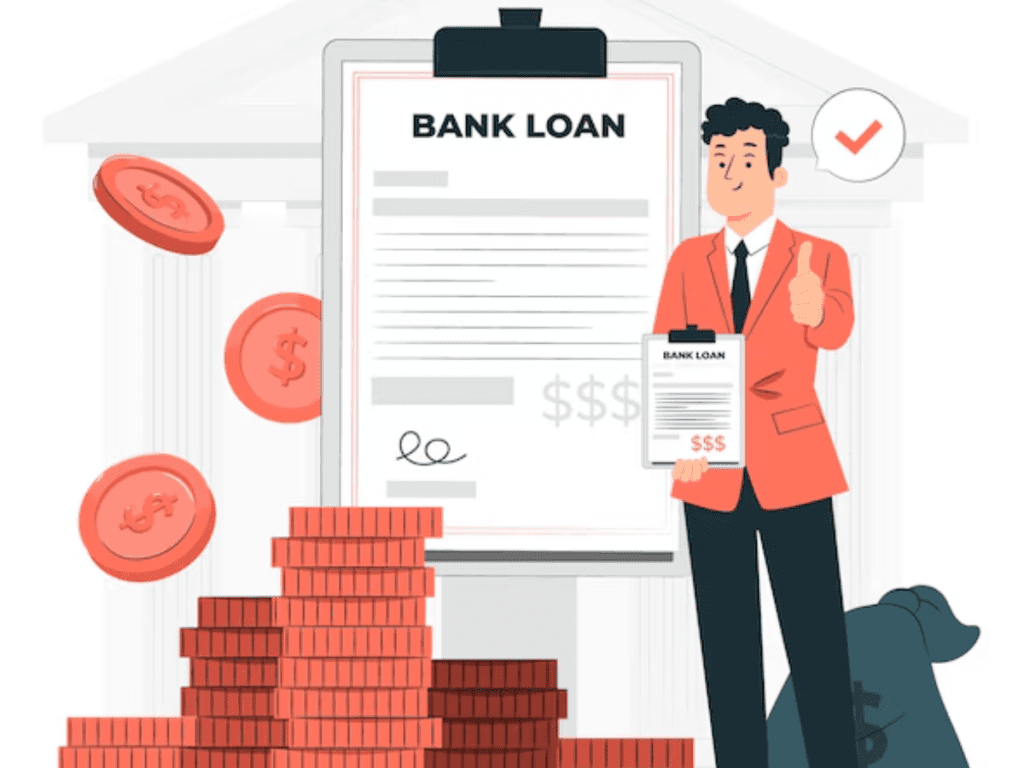Introduction
When you borrow a loan, be it for buying a home, a vehicle, school, or any other big-ticket item, one of the most important elements that determines how much you’ll pay in the long run is the interest rate. The interest rate really decides how much more you’ll pay in interest for the privilege of borrowing money on top of the initial loan amount. For the borrowers, gaining a low interest rate can prove to be a great difference in the duration of the loan, lightening the overall financial load.
Too many borrowers, however, take the interest rate offered to them without considering negotiating a reduced rate. Too many do not know that negotiating a lower interest rate is not only possible but can save a substantial amount of money in the long run. Whether you’re paying excessive interest rates on credit cards, personal loans, or mortgages, or simply want to decrease your financial burden, negotiating a lower interest rate can be a good tactic.
Here, we will outline the best methods of negotiating a lower interest rate from your lender, the advantages of doing so, and the considerations when planning to ask. We will also include steps you can follow to make your negotiation more likely to succeed, and the overall advantages of achieving a reduced rate.
1. Enhance Your Credit Score Prior to Negotiation
Your credit score is instrumental in deciding the interest rate that lenders quote you. Lenders prefer to quote the lowest interest rates to those with high credit scores since this shows that they can handle debt responsibly. Borrowers with low credit scores are regarded as high-risk customers and are usually quoted higher interest rates to cover for this higher risk.
If you are going to negotiate a lower rate, it is smart to start by bumping up your credit score first. A slight improvement in your credit score has the potential to lead to less expensive interest rates. Here is how you can boost your score prior to negotiating:
- Pay off existing debts: Lowering the level of debt you currently owe, particularly the high-interest credit card bills, will both improve your credit score and make you look more financially secure.
- Clean up your credit report for errors: Errors on your credit report can reduce your score. Always make sure that all of the information in your credit report is correct and dispute any mistakes with the credit bureaus.
- Pay on time: One of the best strategies to improve your credit score is to make all your payments on time, such as loans, credit cards, and utility bills.
- Reduce your credit utilization ratio: Try to maintain your credit card balances at or below 30% of the credit limit. High utilization is detrimental to your score.
Enhancing your credit score can take time, but it’s an investment worth making. When your credit score is up, you’ll be better able to negotiate favorable terms with your lender.
2. Do Your Research and Understand the Current Market Rates
Before reaching out to your lender, it’s important to have a clear understanding of what’s available in the current market. Interest rates fluctuate based on economic conditions, and they can vary significantly from lender to lender. Knowing the current market rates for loans similar to yours is essential for making a strong case.
Here are some ways to gather relevant information:
- Compare other lenders’ rates: Compare loan quotes from various lenders, such as banks, credit unions, and online lenders, using online tools and websites. Note the interest rates they provide for loans with comparable terms to your existing loan.
- Observe rate trends: Knowing the interest rate trends over the last year can provide you with an idea of whether rates are increasing or decreasing overall. This information can assist you in knowing when to ask for a decrease.
- Review the lender’s policies: Some lenders are more willing to negotiate interest rates than others. Investigate your existing lender’s policy and reputation with regard to providing lower interest rates or refinancing.
When you’ve collected all this information, you’ll be better placed to go back to your lender and ask them why a reduced interest rate would be reasonable and possible. Your lender will be more willing to consider your request if you’re able to support it with empirical evidence that illustrates there are better rates around.
3. Contact Your Lender
After you’re equipped with the information and have worked to enhance your credit, it’s time to visit your lender. How you present yourself at this point can really make a difference, so being professional, direct, and respectful is essential.
Be sure to follow these suggestions when contacting your lender:
- Be polite and respectful: A friendly, polite tone goes a long way in negotiations. Remember, the lender has the discretion to approve or deny your request, so maintaining a positive relationship is key.
- State your case clearly: Clearly explain why you’re requesting a lower rate. Mention any improvements in your credit score, positive changes in your financial situation, or the availability of better offers from competing lenders.
- Be specific: Be specific about the rate you are seeking when making your request. If you have discovered superior terms from other lenders, inform your existing lender of them and reason why you feel you deserve the same terms.
- Ask for a loan review: Request the lender to review your loan conditions in light of your present credit position and financial position. Some lenders can be willing to negotiate, especially if they have an interest in your business and wish to keep you as a customer.
The key is to be prepared, confident, and professional in your approach. Lenders often expect to negotiate terms with borrowers, so don’t be afraid to ask for a better deal. The worst-case scenario is that they say no, but you’ve lost nothing by asking.
4. Leverage Your Payment History
If you have been making regular, timely payments on your loan, employ this in your negotiation. A solid payment history indicates that you are a good borrower, and lenders are more likely to lower the interest rates of borrowers who have a history of good money management.
When negotiating your payment history, remember these things:
- Emphasize your dependability: Accentuate the fact that you never missed a payment or only missed a few tiny payments, and that you’re committed to honoring your responsibilities.
- Leverage progress: If you’ve earned more money, reduced your debt ratio, or upgraded your credit rating, highlight those as indications you’re a lesser risk now.
- Suggest your loyalty: If you have been a customer of the same lender for many years and have been good, don’t be afraid to say so. Lenders want long-term, reliable customers and might be happy to give a better rate in order to retain you.”.
Being able to show that you’ve been responsible with your payments—and that you’re now in an even better financial position—can help convince your lender that lowering your rate is a reasonable and beneficial decision.
5. Offer to Set Up Automatic Payments
Another great method of reducing your interest rate is by proposing to establish automatic payments from your bank account. Lenders generally consider borrowers who establish automatic payments as less-risky customers since the probability of missing payments is greatly lowered. Proposing automatic payments can make the lender more willing to provide a lower rate since it guarantees timely payment and makes their administrative process easier.
Here are a few things to keep in mind when recommending automatic payments:
- Demonstrate your commitment: Agreeing to initiate automatic payments indicates that you are committed to handling your finances in a responsible manner and that you wish to make life as simple as possible for the lender.
- Request a rate of interest decrease in exchange: A few lenders will give a minimal interest rate reduction (usually 0.25% to 0.50%) to customers who establish automatic payments. Be sure to inquire whether they provide this incentive.
- Verify the discount: If the lender is willing to lower your rate for having automatic payments set up, be sure to verify the specifics, like how much lower the rate will be and when it will be implemented.
No matter how slight the reduction may seem, it can add up over time and result in tremendous savings. Automatic payments can be a good deal for you and your lender alike.
6. Refinance Your Loan if Needed
If your lender is unwilling to negotiate your interest rate, refinancing might be a good alternative. Refinancing involves taking out a new loan to pay off your current loan, often with a lower interest rate. This can be a great option if your current lender is inflexible or unwilling to negotiate.
However, before refinancing, make sure to:
- Shop around offers: Refinance from various lenders to get the best interest rate available.
- Get familiar with the costs: Refinancing frequently incurs fees like closing fees, application fees, or appraisal fees. Be sure that the benefits of a lower interest rate will cover such costs.
- Consider your loan term: Refinancing can sometimes extend the length of your loan, which could lower your monthly payments but result in paying more in interest over the life of the loan. Ensure you’re comfortable with the new terms before proceeding.
Refinancing is a wonderful method of lowering your interest rate, but you should do the numbers and see if, ultimately, the new loan will save you money.

